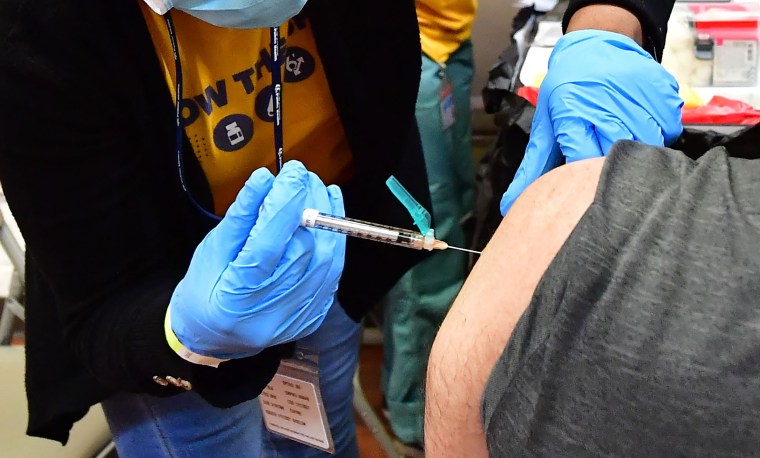The Centers for Disease Control and Prevention on Wednesday, April 19, backed a second dose of the updated COVID-19 booster for older adults and people with weakened immune systems.
The recommendation is in line with the Food and Drug Administration, which authorized the additional dose on April 18.
Those 65 and older can get a second dose of the updated versions of Pfizer-BioNTech’s and Moderna’s COVID booster at least four months after their last dose, the FDA said in a statement. Most people who are immunocompromised can get an additional dose at least two months after their last dose, according to the agency.
The move by the CDC came hours after the agency’s advisory panel, called the Advisory Committee on Immunization Practices, met to discuss the changes authorized by the FDA. The CDC sign off means shots could begin immediately.
Following the FDA’s decision, the CDC also recommended using the bivalent formula in all COVID vaccines moving forward and is doing away with the multidose primary series for people who have not yet been vaccinated.
That means people who haven’t been vaccinated yet would need to get only a single dose of the updated vaccine for the primary series.
The booster shots were reformulated last August to target the BA.4 and BA.5 omicron subvariants, in addition to the original strain of the virus.
BA.4 and BA.5 are no longer in circulation in the U.S.
As of Saturday, roughly 78% of new U.S. COVID cases are caused by the omicron subvariant XBB.1.5, according to the CDC.
Dr. Isaac Bogoch, an infectious disease specialist at the University of Toronto, said that while the boosters don’t match the currently circulating strain, they should still provide people with some protection.
A CDC report published in January found that the updated COVID boosters reduced the risk of COVID infection from the XBB.1.5 subvariant by nearly half. Another study, published by Israeli researchers in the Lancet this month, found that the COVID boosters reduced the risk of hospitalization in people 65 and older by 72%. Neither study, however, looked at the effects of receiving two doses of the bivalent booster.
“To date, regardless of the circulating variant, the vaccines continue to provide meaningful protection against severe manifestations of the virus such as hospitalizations and death,” Bogoch said.
Uptake of the boosters has been low, with only around 17% of the total U.S. population having received one, according to the CDC.
This week’s move comes several months after an advisory committee to the FDA raised doubts about moving to yearly COVID boosters for most adults and children but appeared to be supportive of multiple doses for the most at-risk Americans, like older people or people with weakened immune systems.
It’s not yet known whether younger adults and children will be allowed to get an additional dose of the omicron shot, but FDA officials have previously said they plan to convene an advisory committee this summer to discuss what the COVID booster campaign might look like in the fall.
This story first appeared on NBCNews.com.
